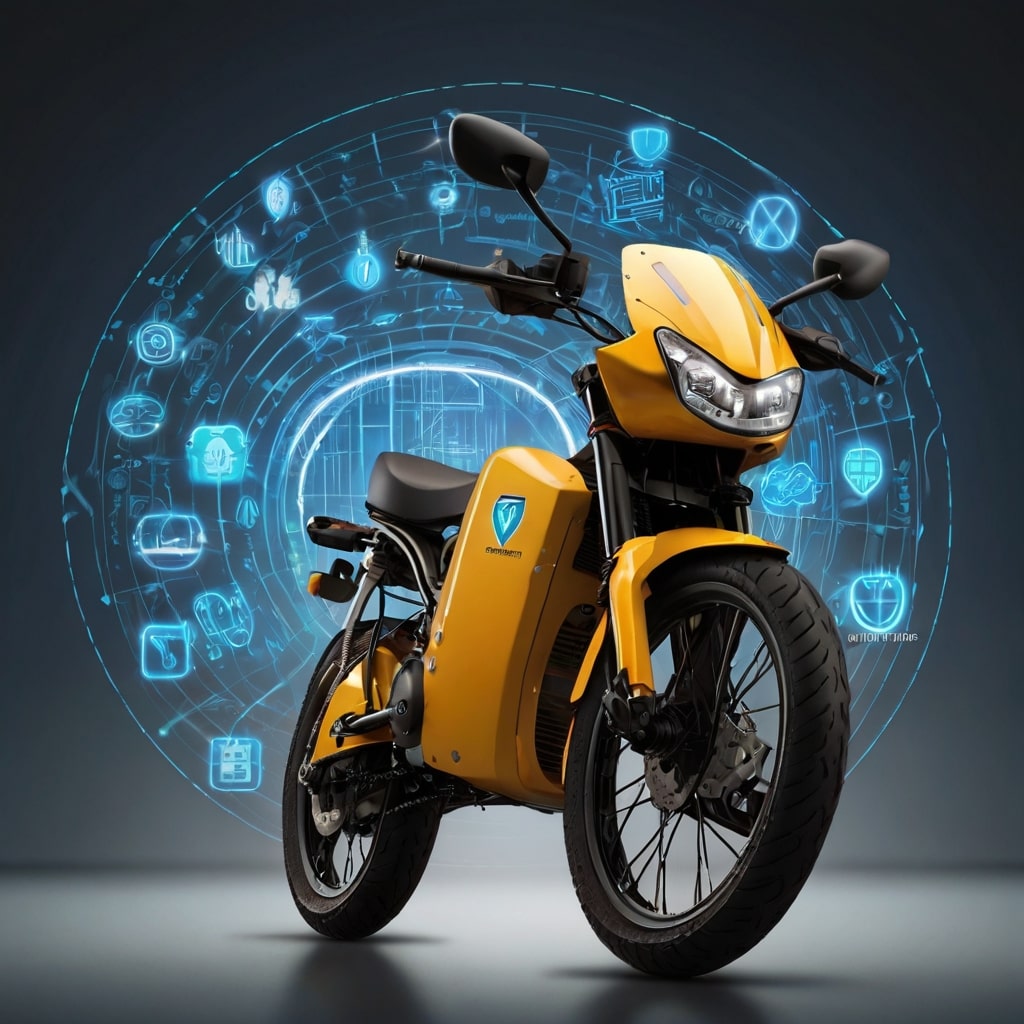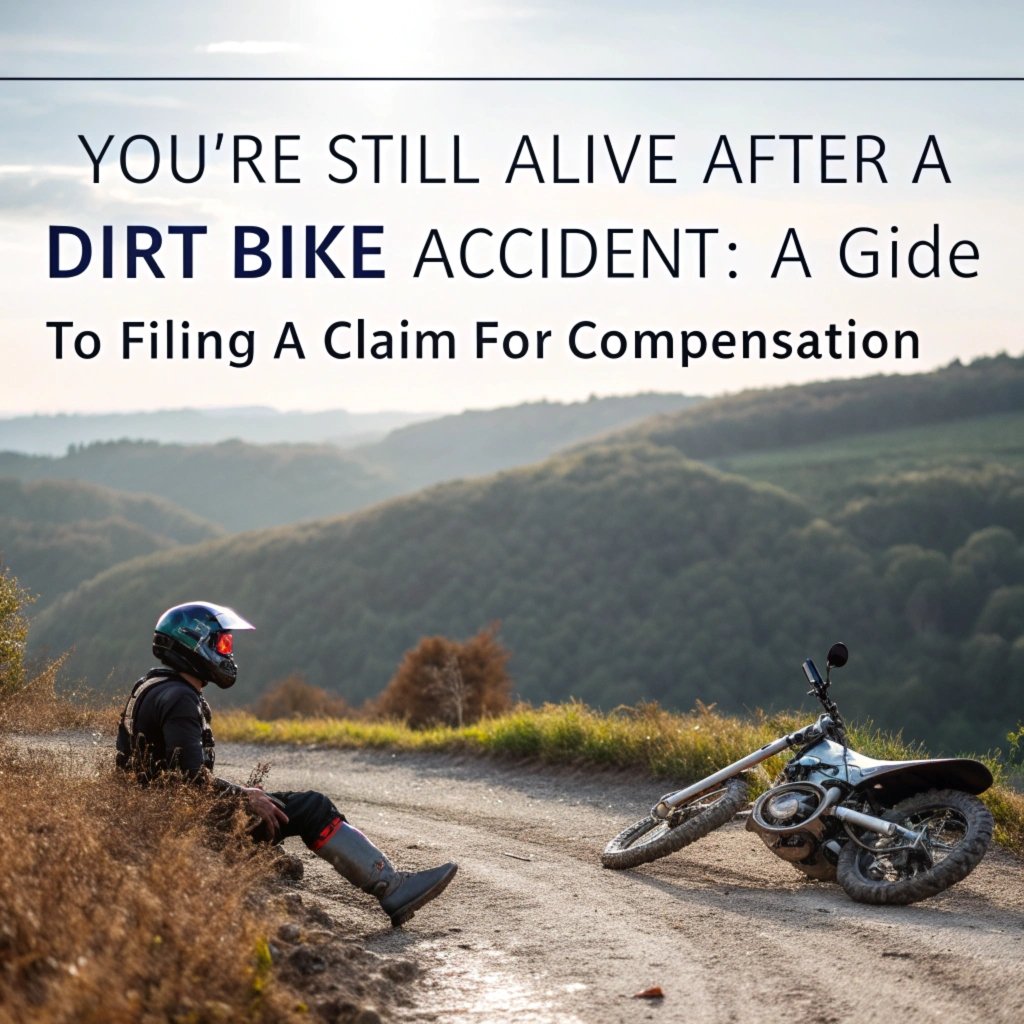Riding an electric bike has never felt so liberating. With pedal assist and advanced safety features, the thrill of cycling is more accessible than ever.
But have you stopped to think about what happens next if something goes wrong?
As e-bike popularity continues to soar, one often-overlooked aspect of ownership remains under-examined – insurance coverage.
Knowing that your financial future and personal assets are protected will be a huge weight lifted off your shoulders.
That’s why we’re diving into what you need to know about electric bike liability insurance. We’ll explore the potential risks, how much they can cost, and most importantly – whether or not it’s worth having this protection for e-bike riders like you.
Understanding Liability Risks Associated with E-Bikes
When it comes to e-bikes, there’s a growing awareness about insurance options that can provide protection from liability for unintended consequences. This is important because e-bikes are increasingly being used on roads shared with other vehicles and pedestrians.
If you get into an accident or cause one as the owner of an electric bike, you could be held responsible for damages or injuries even if it wasn’t entirely your fault. You may have been too busy using the GPS to navigate through heavy traffic or were simply too distracted by road conditions.
However, there’s a chance that liability laws vary greatly depending on where you live. In some places, e-bikes are considered mopeds and thus fall under local regulations which could leave no room for such incidents while others may view them as bicycles requiring certain insurance types.
If it all sounds daunting then do your research before taking out an insurance policy for the sake of knowing what’s covered and how much you’ll pay.
Exploring the Consequences of Being Hit by an Uninsured E- Rider

Being hit by an uninsured e-rider can result in severe injuries and financial burdens that can have lasting effects on your life. With inadequate coverage, medical expenses alone could total upwards of $5,000 for emergency room visits to over $50,000 or more for ongoing rehabilitation. Without proper insurance protection from liability for unintended consequences like this, these financial burdens can lead to stress and impact your daily life in profound ways.
The lack of comprehensive coverage leaves victims with mounting medical bills, long-term emotional trauma, and an uncertain financial future. For instance, if a cyclist is involved in an accident caused by someone who couldn’t afford insurance, the costs can snowball quickly. A single day’s stay at the hospital could exceed $1,500 or more without adequate protection.
Furthermore, being hit by someone with no insurance coverage might have unintended consequences beyond your personal financial struggles. A study found that 75% of cyclists lack sufficient insurance; this gap in safety nets puts entire communities and families at risk. The risks associated with riding e-bikes are very real . We must take responsibility for our own protection.
To avoid these devastating outcomes, electric bike riders should prioritize having comprehensive coverage options like accident or liability protection from unforeseen events. This way, even if an uninsured e-rider causes a crash, you’ll have the necessary support to recover and rebuild without facing financial ruin. Don’t let such risks become yours seek out reliable insurance plans today and safeguard your future.
The value of electric bike insurance can be summed up as follows: it’s not just about saving money but also ensuring safety for both yourself and those around you when riding in public areas.
How Electric Bike Insurance Protects You in a Collision
“Now that you’re aware of your electric bike’s status under state law, let’s dive into how to protect yourself from liability in case of an accident. Don’t you want to avoid financial ruin after being involved in a crash? The fact is, e-bike laws are evolving fast, and it’s time for riders like you to take proactive steps.
In many states, electric bikes are treated as bicycles and subject to the same traffic laws. This means that if an accident occurs outside your fault zone (literally!), you might be held responsible for damages or injuries even with insurance coverage. It’s not just a matter of being at fault; studies have shown that 25% of e-bike accidents involve riders who aren’t entirely to blame.
Consider Sarah’s experience in a recent accident, where she accumulated $2,500 in medical bills and lost two weeks’ wages after receiving an unexpected injury while riding her e-bike. Her story highlights the risks and stresses associated with being involved in such incidents. To avoid similar fates like hers, it’s crucial to have the right insurance coverage.
Here are some cities that are actively working to address this issue: Seattle, where a recent law amendment requires personal injury protection for all cyclists; San Francisco, which is set to implement strict e-bike safety regulations; and Denver, whose mayor has pledged $1 million towards promoting cyclist safety infrastructure. These cities know the value of protecting their residents.
However, standard insurance policies often leave riders like you hanging. 21% of policyholders have reported difficulties in getting compensation for e-bike-related accidents due to exclusions or coverage gaps. Be honest with your insurer: don’t assume that they’ll automatically cover any accident involving an e-bike.
To mitigate these risks, it’s essential to carefully review and choose insurance policies that explicitly include liability coverage for electric bike riders. This might mean shopping around for quotes from multiple providers before settling on the right one. After all, 90% of people wouldn’t be caught dead without health insurance. “Don’t you want to ensure your e-bike investment is protected?
In conclusion, understanding how e-bikes fit into state traffic laws and having the right insurance coverage can save lives and reduce financial burdens. Stay vigilant, riders; accidents may happen but they shouldn’t ruin your life.”
This revised section incorporates actionable insights on how electric bike owners might be at risk of liability in case of an accident.
Navigating Claim Process and Settlement Options for Electric Bike Accidents
Understanding Your Liability Insurance Options is Essential When Riding an E-Bike
Did you know that a single accident can wipe out your entire savings? It’s true – e-bikes, despite their popularity, bring unique liability risks on roads and trails. As you navigate the thrill of cycling with electric assistance, it’s crucial to have a plan in place for the unexpected.
Understanding Your Liability Insurance Options is Essential When Riding an E-Bike
- Don’t get left in the dark: The road to recovery can be lengthy and financially crippling without proper coverage.
Standard car insurance policies now cover e-bikes as long as they meet specific criteria, such as being designed for human pedaling assistance only. To maximize your coverage, review your policy’s fine print carefully and ask about any restrictions or add-ons that might affect you.
For instance, if you purchased an e-bike with a faulty brake system before the accident, it could be considered contributory negligence by insurance companies. Similarly, failure to disclose certain details can lead to denied coverage for future claims.
If your policy excludes accessories like lights and reflectors but doesn’t mention aftermarket components, such as helmets or gearboxes, ask about adding them! Some companies offer discounts if you install these safety features on your e-bike.
- Be Prepared: A Smooth Claim Process Saves Time
When involved in an accident while riding an electric bike, understanding the claim process can make a significant difference.
Start by taking clear photos of any damage and document all injuries sustained, no matter how minor they may seem ( bruises or scratches). Keep detailed records of conversations with authorities or witnesses, including their contact information. These basic steps will help streamline your application for compensation.
For example:
- Document the make, model, and serial number of both vehicles involved in an accident
- Get witness statements explaining what happened before you take any action
- Record police reports (if applicable) to support your claim
- Factors to Consider When Filing a Claim: The Fine Print Matters
The Impact of Road Conditions on E-Bike Safety and Liability

Riding an electric bike requires you to be aware of your surroundings like never before. As e-bike owners, it’s crucial to consider the potential liabilities related to road conditions that can put you at risk.
E-bikes are no exception when it comes to navigating treacherous roads. According to a study by the National Highway Traffic Safety Administration (NHTSA), 50% of cyclist fatalities in the US involve vehicles with mechanical issues, which could be attributed to poor road conditions. This highlights just how vulnerable e-bike riders can become on rough pavement or uneven bike paths.
As an industry expert once stated, “When it comes to electric bikes, the risk of damage from road irregularities is much higher than traditional bicycles. It’s like riding a car without insurance you’re at fault for not taking care of your investment.” This underscores the need for e-bike owners to take proactive steps in protecting themselves against potential liabilities.
Liability insurance specifically addresses these concerns by providing financial protection in case an accident occurs due to a defective product resulting from its interaction with road conditions. In this way, coverage provides peace-of-mind and ensures that any costs associated with damage are covered, thereby mitigating the risk of financial losses due to unforeseen events.
Some key benefits of liability insurance include:
- Coverage for parts and labor costs
- Protection against third-party claims (e.g., accidents involving pedestrians or other vehicles)
- Exclusions for intentional damages or misuse
To get started on your e-bike, research and compare different insurance options from reputable providers. When purchasing coverage, consider the following key factors:
- Policy limits: Ensure that you choose a policy with sufficient coverage to protect your investment.
- Deductibles: Consider higher deductibles if they will not affect your spending much.
- Exclusions: Know what is excluded by looking at the terms of insurance contracts and be aware that it may impact how claims are processed.
Don’t assume you’re fully covered. Shop around for quotes from top providers to find a policy that suits your needs, such as coverage limits.
Dealing with Inclement Weather While Riding an E-Bike
Riding an e-bike in rainy conditions can be hazardous, but taking preventive measures can minimize risks. With proper equipment and situational awareness, riders can reduce their exposure to hazardous conditions while riding.
Lighting options are crucial for increasing visibility and reducing the increased risk of being involved in an accident. Front and rear LED lights not only enhance your visibility but also provide a safer riding experience. For instance, consider investing in LED lights with adjustable brightness or colored lenses that focus light on specific areas where pedestrians may be more visible. Installation costs can vary depending on the type and quality of the lights; however, many affordable options are available to fit different budgets.
To further improve visibility, fenders or mudguards can shield your bike from water splashing back onto it. This simple yet effective feature helps prevent damage to your e-bike’s electrical components and keeps you dry in case of heavy rain. Additionally, consider investing in a waterproof bag that can keep essential items such as tools and snacks securely stored.
Being mindful of road conditions is another critical factor when riding an e-bike in bad weather. When it rains heavily or during strong gusts, roads become slippery, making it challenging to control your bike. As a result, slowing down on wet surfaces is essential. aim for one-third less speed than usual to account for the reduced traction. Furthermore, be aware of standing water and potholes that can cause accidents.
For instance, when heavy rain creates a thick layer of standing water on roads, it’s best to slow down significantly as the risk of losing control increases exponentially. Similarly, during strong gusts that can make roads slippery without warning signs or markers indicating reduced visibility.
Moreover, situational awareness is key to riding safely in bad weather. Use traffic apps that provide real-time updates about road conditions and forecasted changes. Moreover, consider checking local news channels for any scheduled road closures due to accidents or construction.
By combining adequate lighting and heightened awareness of your surroundings, riders can reduce their exposure to hazardous conditions while riding an e-bike in rainy weather. Regularly inspecting your bike’s tire pressure, chain tension, and brake pads will also help prevent mechanical issues that could lead to safety risks on wet roads.
Understanding Insurance Coverage for eBikes in Different Jurisdictions
As an e-bike rider, you’re likely aware that traditional bike insurance may not provide adequate protection in case of accidents. However, many jurisdictions have laws and regulations surrounding electric bike usage, creating uncertainty about what type of insurance is necessary for safe operation.
In the United States, bicycle laws vary significantly from one another. What’s legal in California might not be allowed elsewhere, highlighting the importance of understanding local regulations.
For instance:
- In Oregon, e-bikes that produce 750 watts or more are considered motorcycles and require specific registration.
- Meanwhile, cities like San Francisco have enacted laws requiring all electric bike riders to carry $5 million liability insurance.
Typical bicycle insurance policies often fall short when it comes to e-bikes, leaving riders vulnerable. For example:
In California, if another driver damages your e-bike, you might need a $5,000 liability policy or more. If that damage occurs due to someone being hit by a reckless vehicle wearing protective gear while riding your bike in the wrong lane with no prior safety measures such as side guards installed – then there may not be much protection left on offer; however this would vary depending upon local traffic laws & regulations.
Liability can also come into play when another driver is at fault but you’re found to have been negligent.
In these cases, liability shifts onto the bike owner unless specific safety measures such as helmets and side guards are used.
Most insurance policies won’t provide adequate protection in this situation because they may only cover up to $500 worth of damage per year – which isn’t enough for major repairs or even a new frame if your e-bike is badly damaged.
However, having the right coverage can protect you from financial loss. If you have an additional policy that includes all-terrain vehicle (ATV) insurance, it may cover damages to vehicles such as this.
In conclusion, understanding the complexities of electric bike insurance and local regulations can be daunting; but with research and knowledge – riders like yourself could navigate these challenges more effectively
Tips for Choosing the Right Electric Bike Insurance Policy
Bike riders beware: Electric bike insurance can seem daunting, but it’s essential to choose wisely.
As e-bikes have become a popular mode of transportation and recreation, with their number growing rapidly on our roads, so do the risks associated with them. It’s crucial for cyclists to understand that electric bike insurance is not just an afterthought anymore; it’s a vital consideration when choosing an appropriate policy tailored specifically towards your needs.
When considering purchasing electric bike insurance, there are several key factors to take into account:
Understanding Your Coverage
For instance, let’s say you’re riding your e-bike through the city and suddenly get hit by a car. If the police report confirms that another driver was at fault but only lists minor scratches on your frame as damage, do you know whether it will be covered under your insurance policy? Look for policies with comprehensive coverage options. For example, if your high-end bike is worth over $10,000 and features costly components like gears or motors, make sure the provider covers these types of risks.
Reviewing Policy Documents Carefully
It’s easy to get overwhelmed by numerous insurance providers and plans available in the market. Don’t let that happen! To make informed decisions about your coverage options take note:
Check what is covered: Review policy documents carefully so you know exactly which equipment or damages will be reimbursed.
For instance, some policies may cover up to $2,000 for repairs after an accident but not for damage due to wear-and-tear.
Check Deductibles
Having too high of deductibles can be really frustrating when the worst happens. You’ll need to pay more than what many insurance plans require before they will pay out.
Consider finding a policy with lower or no deductibles at all, especially if you have an expensive e-bike model that requires costly repairs.
Check Limitations
Sometimes policies try to limit coverage in order not to make a profit from policyholders. Insurance companies may only cover accidents under specific conditions while riding your e bike (e.g., when wearing proper safety gear). Don’t sign up for a policy without reading the fine print on those rules of engagement, including exclusions.
Ask yourself:
- Do you need coverage against theft or damage due to wear-and-tear?
- Are there any limitations in coverage that might leave you exposed?
Deductible, Limits and Exclusions: The Right Fit for Your E-Bike
Consider what kind of risks your e bike exposes you to when taking an insurance plan. If it covers accidents but not damage due to wear-and-tear then that’s the way to go if you have a more expensive e-bike model.
Take your time deciding on the right policy for yourself, and don’t hesitate to ask questions or seek advice from experts before making any decisions.
Common Types of Dangers to Consider When Insuring Your e bike
As an electric bike enthusiast, you’ve likely experienced the rush of adrenaline as you zip through streets or trails on your new ride. However, accidents can strike at any moment, leaving financial burdens and stress that no one needs.
When it comes to e-bikes, there are several types of dangers that could lead to liability claims. Some of these risks include:
Accidents involving pedestrians or other cyclists: According to a recent study, the rate of cyclist fatalities has increased by 15% in urban areas where e-bikes are more common. To minimize this risk, make sure you’re visible on the road – wear bright clothing and use hand signals like any other cyclist.
Injuries caused by faulty or malfunctioning e-bike parts can be prevented with regular maintenance. Follow your manufacturer’s recommended schedule to ensure that all components are functioning properly. For example, oil checks every six months and tire pressure monitoring will help reduce the likelihood of mechanical failures.
Property damage or theft is a real concern for any cyclist. According to data from the National Bicycle Association, an average e-bike costs around $3,000 to replace if stolen. Take steps to protect your bike in public parking lots by locking it securely with U-locks and considering GPS tracking devices.
Liability for accidents caused by road conditions is another risk that many riders face. As a cyclist, you may be more vulnerable on wet or slippery roads due to reduced traction and visibility. To minimize this risk, report any hazardous road conditions to your local authorities immediately, so they can address the problem before it causes harm.
Lastly, if another driver hits you while riding your e-bike on the road, their insurance might not cover damages for their own vehicle. Having liability coverage for these types of accidents will help offset costs resulting from damage or replacement.
By being aware of potential dangers and taking steps to mitigate risks, you can enjoy a safer and more secure experience as an electric bike enthusiast. Investing in e-bike insurance may seem like an added expense now but could save you financially if anything happens to your valuable investment
Cycling Accident Policy Essentials for Peace of Mind
Great bike riders demand peace of mind, and that’s what cycling accident policies provide. Those who understand their policy will avoid unnecessary stress after a crash, knowing they’re covered from liability.
The right insurance coverage can give you the protection and security to ride with confidence. Without it, a serious accident could leave you facing significant financial losses and uncertain outcomes.
So act quickly to secure your safety net today. Don’t wait for an unexpected event – take proactive measures now by investing in comprehensive cycling insurance that safeguards against liability.
Take control of your road risks and ensure the peace of mind that comes with knowing you’re protected from the unforeseen consequences of a bike accident.



